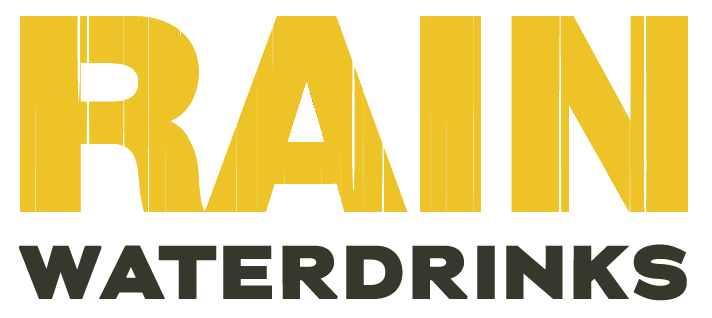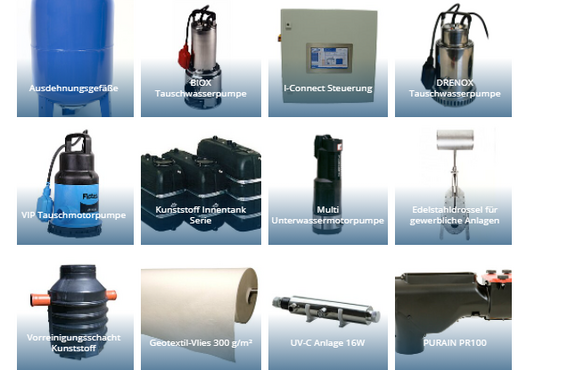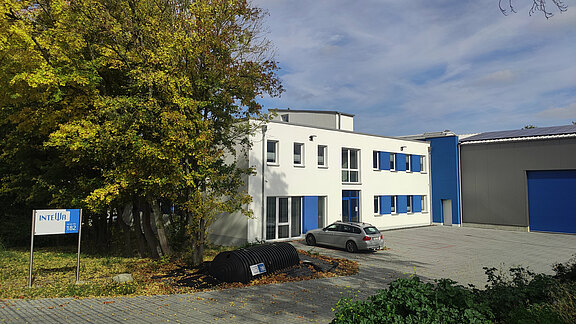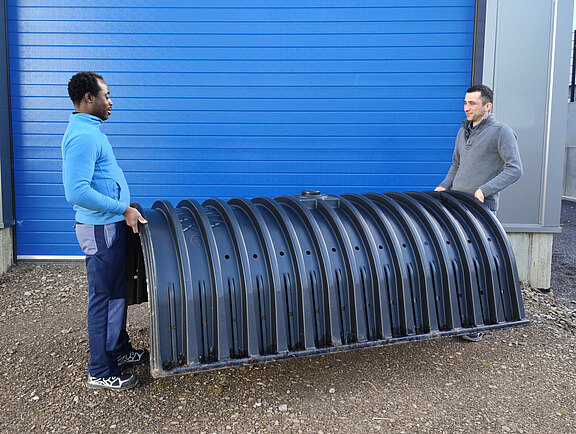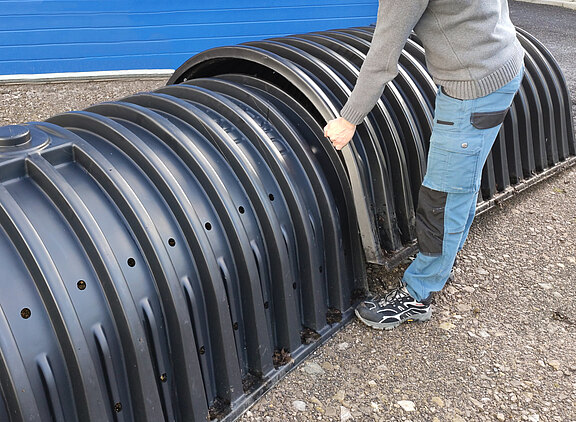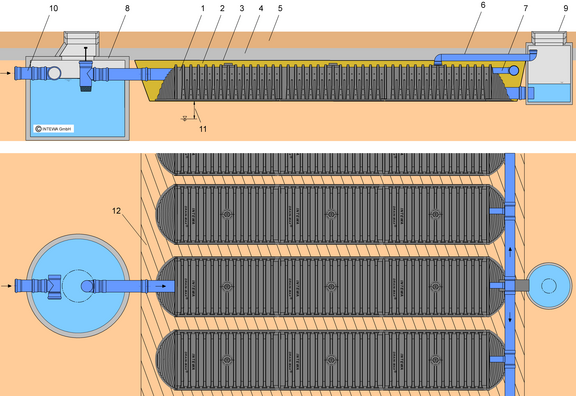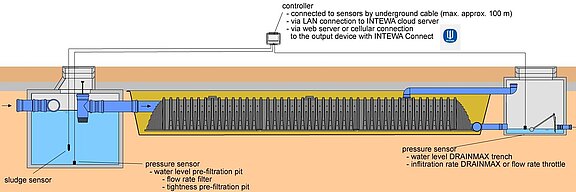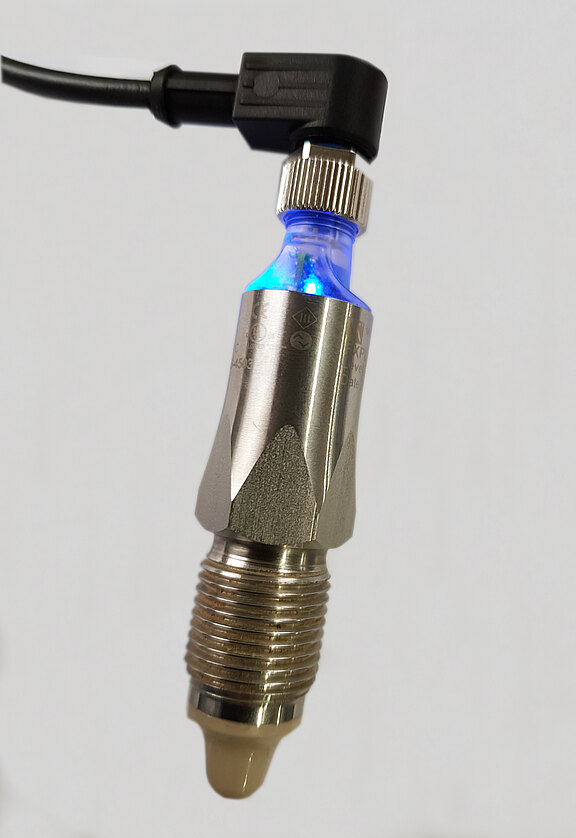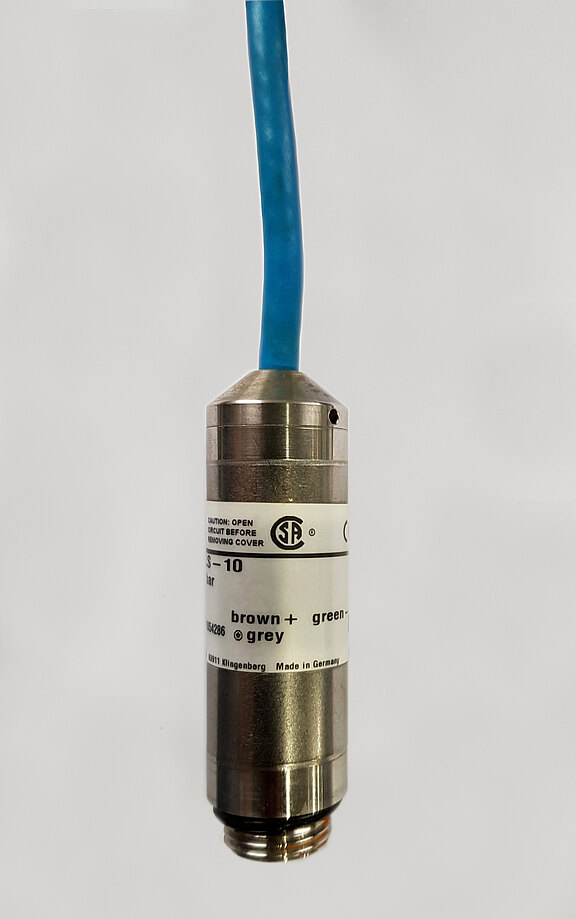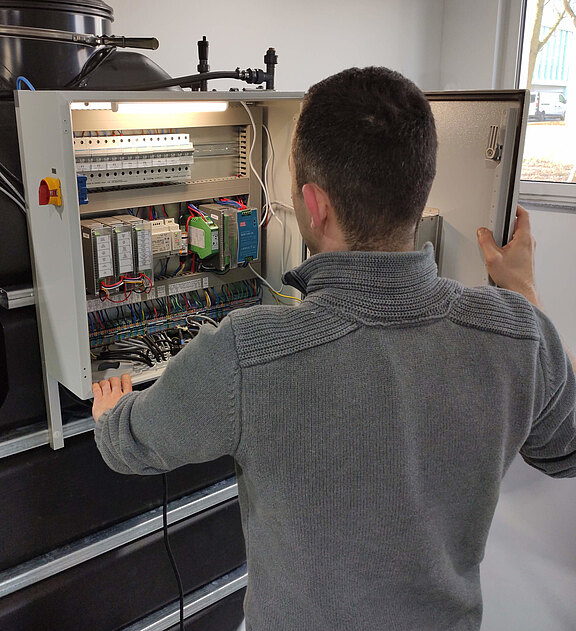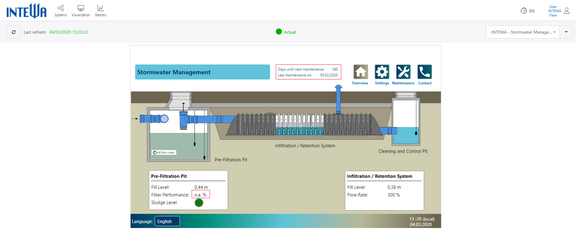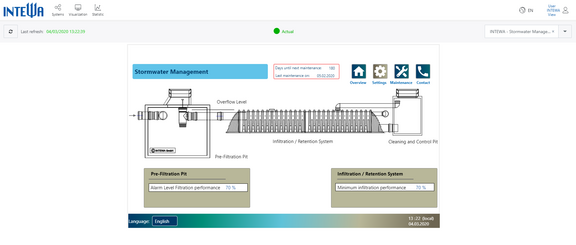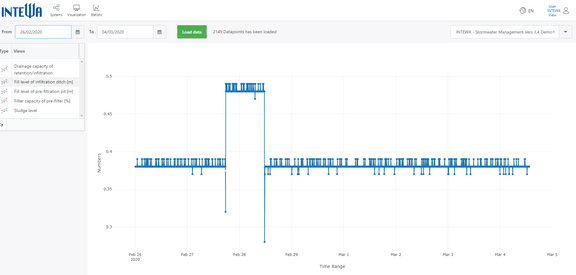Stormwater management 4.0
Modern storm water management has already become an important part of new construction projects in many areas due to climate change with increasing heavy rainfall events and increasing sealed areas. But what exactly happens in practice?
Infiltration trenches go digital
Until now, infiltration and retention systems have only been monitored if at all manually. The discharge performance cannot be monitored or measured here. This leads to a lack of maintenance and function of the systems. Often, a response is only done when the system is continuously overflowing. With the innovative INTEWA CONNECT technology, for the first time worldwide, these systems can now be remotely monitored. System operators are informed of sludge level, pre-filter flow and discharge capacity at any time via the INTEWA cloud server. This new remote monitoring system guarantees perfect operation of the system and give a return on investment within a few years.
Introduction Storm Water Management and Current Situation of the Technology
The direct effects of increasing land sealing are being observed everywhere. Most prominent are rising costs for rainwater runoff and flood damage. Over the last few years, a new way of thinking has taken place. The former goals of a drainage and central treatment of rainwater are being modified. The idea of decentralized infiltration, i.e. the infiltration of rainwater overflows, if possible where they occur, is becoming more and more widespread and is becoming an essential element of sustainable rainwater management - for the benefit of both residents and the environment. Increasingly, decentralized infiltration on site is also being pushed for by the authorities. More and more cities and municipalities are promoting these measures, in part through more favorable wastewater charges, exemption from the charge for rainwater or a subsidy for unsealing and infiltration measures. Many systems therefore have a short payback period.
State of Technology
In recent years, plastic trenches with a high storage capacity have become the most popular choice over gravel trenches. The disadvantage of gravel trenches is the large area and volume required, as the gravel used generally only has a storage capacity of between 20 and 35%. The advantages of the plastic trenches are obvious. With a retention volume of more than 95%, only one third of the conventional installation space is required and thus only one third of excavation work, transport and landfill costs. The simple installation of the plastic elements makes it possible to create the retention volume without heavy machines. The so-called tunnel systems proved to be particularly efficient in the case of the plastic systems. The INTEWA DRAINMAX tunnel system, for example, consists of large-volume, lightweight plastic elements for the storage and subsequent infiltration or retention of precipitation water. The half sections have a retention volume of 100 %. The rainwater can infiltrate downwards and through the openings in the side walls into the ground at any time. Due to their stack ability, up to 20 tunnels can be loaded on one pallet. This corresponds to a retention volume of 320 m³ per lorry.
The DRAINMAX tunnels are constructed in rows. The tunnels are simply connected by overlapping the first rib. Further fastening of the tunnels to each other is not necessary. If one row is not sufficient, another row can be installed next to it, etc. Due to their low weight of 32 kg and a storage volume of 1.6 m³, the individual tunnels can easily be installed by two people. As the system can be flowed through in three dimensions, no further pipes or gravel are required for the distribution of the water. This means that over 30 m³ / h can be installed by two people.
Due to the curved geometry, the tunnels can be subjected to enormous loads after backfilling. The INTEWA DRAINMAX tunnels are DIBt approved for SLW60 heavy-duty class. A typical system for rainwater infiltration is shown in figure 1. The rainwater is first cleaned via an upstream sedimentation and filter pit. The rainwater is then infiltrated via the DRAINMAX tunnel system. A flushing and control pit enables the inspection and cleaning of the manifold row.
| 1. DRAINMAX Tunnel | 7. Rainwater distribution |
| 2. Side and upper tunnel backfilling | 8. Sedimentation/ Filter pit |
| 3. Geotextile | 9. Flushing pit |
| 4. Tunnel cover | 10. Rainwater inlet |
| 5. Top soil | 11. Ground water level |
| 6. Ventilation | 12. Woven geocomposite underlay |
The inspection of the plant should normally be carried out every six months and covers the following actions:
- Check the sedimentation and filter pit for sludge content using a sounding rod.
- Check sedimentation and filter pit for leaks
- Check pre-filter for flow and dirt contamination
- Check throttle outlet for free movement, dirt or blockage
- It is not possible to check the drainage capacity of the infiltration trench!
This check usually has to be carried out by two persons, resulting in expensive and unnecessary costs. When inspecting a shaft, the usual safety regulations must be followed. The current regulations DWA-A 138 (planning, construction and operation of facilities for the infiltration of precipitation water) provide for a six-monthly inspection. In the new draft of DWA A102 (Principles for the management and treatment of rainwater runoff for discharge into surface waters), reference is made to self-monitoring for treatment plants (cleaning plants): "Mandatory requirements and guidelines for self-monitoring and measurement of effectiveness for structural rainwater treatment facilities in combined and separated systems are to be found in particular in state-specific regulations and ordinances of the federal states".
However, our experience of almost 20 years in the sector shows that many systems are not monitored at all in practice. A particular problem is that the discharge performance cannot be monitored at all with such controls. Many systems therefore no longer function properly after a few years and no longer support heavy rain regimes. Often operators only start to react when it continuously overflows. To solve this problem and save unnecessary costs for the operator, INTEWA has developed the new I-CONNECT technology, which can now be used for remote monitoring of these systems.
INTEWA CONNECT remote monitoring of trenches
To enable remote monitoring of the trench systems in the future, they will be equipped with sensors that transfer the data to a central control unit, the INTEWA CONNECT Controller. From there, the data is transferred to the INTEWA cloud server via a secure Internet connection. The INTEWA cloud server now enables system operators to view all data, such as the infiltration performance of their system, from anywhere and is informed of any maintenance requirements. An overview of the infiltration system with I-CONNECT technology is shown in Picture 4.
The sludge sensor in the sedimentation and filter pit
- Sludge level
This sensor detects different properties of the surrounding medium using a frequency method. It reacts to changes in the density of the surrounding medium and can detect the build-up of sludge accurately. When the sludge level in the tank reaches the sensor, a signal is triggered and the operator is informed. The operator can then ask a maintenance company to remove the sludge.
The pressure sensor in the sedimentation and filter pit
- Water level in the pit
- Filter flow rate
The pressure sensor is simply installed on the bottom of the pre-cleaning pit. It determines the water level therefore can also detect a leak in the pit. If the water level in the tank falls below a specified level, a signal is generated and the operator is informed. The other more important function of this sensor is the determination of the flow rate through from the pre-filter. The INTEWA CONNECT software continuously monitors changes in water levels. If the settling velocity falls below a defined threshold value, this means that the filter flow rate is no longer sufficient and the filter must be cleaned.
The pressure sensor in the inspection pit
- Water level in the infiltration trench
- Discharge performance of the infiltration trench
The pressure sensor is also simply positioned on the bottom of the inspection pit. On the one hand, it determines the water level in the infiltration trench. This can be of interest for statistical evaluations. The additional, more essential function of this sensor is the determination of the discharge performance. For this purpose, the INTEWA CONNECT software determines the change in water levels in the infiltration trench and calculates the rate of infiltration continuously. If the infiltration rate falls below a defined value, this means that the infiltration capacity of infiltration systems has decreased due to clogging of the infiltration area or the throttle outlet of retention systems is blocked or jammed. Then the operator can instruct a maintenance company to flush the infiltration trench or maintain the throttle.
Controller, visualization, security
The visualization and user interface can be carried out offline directly via desktop computer, laptop/notebook or smartphone via USB connection. Visualization and user interface with PC and laptop can be performed offline via a USB connection or online with the INTEWA cloud server, while the INTEWA AndroidApp enables mobile access via smartphone and tablet.
Compared to other systems, the connection between controller and cloud server requires no additional port forwarding and no VPN. A direct, multi-encrypted connection via LAN is established. Access via app and web browser is via an encrypted HTTPS connection (security certificate). The data is stored on secure IONOS 1&1 servers in Europe. The controller allows output to all common BMS (Building Management Systems), such as Bacnet, Modbus and KNX.
The Cloud-Server
The web application is used via a licensing system. The prices for the licenses, the sensors and the controller will be published at the IFAT trade fair from May 4 to 8 in Munich. After login, the INTEWA Connect cloud server provides a clear layout that enables the storage of any system. The I-CONNECT technology has already shown its benefits for commercial grey water recycling systems and will be developed for other applications in the future.
After selecting the plant, the user is redirected to the "Plant overview".
Here the user obtains at a glance all important information on the status of the plant, such as filling levels, sludge status, filter performance and discharge capacity.
The system can be adjusted under "Settings". This is normally done only once during commissioning. Alarm parameters for the filter capacity and the discharge capacity of the infiltration trench are entered here.
Statistics can be shown for all parameters for any period of time.
Summary and outlook
The new INTEWA CONNECT technology for the first time enables real and comprehensive remote monitoring of rainwater management systems, including determination of discharge capacity. Plant operators are informed of sludge status, filter flow and discharge capacity at all times via the INTEWA cloud server. In the future, this new remote monitoring system will not only guarantee the failure-free operation of the systems, but also will have a return on investment within a few years. Therefore it is feasible that this technology will become the state of the art for all new systems to be installed in a few years. The possibility of integrating INTEWA CONNECT systems into existing infiltration trenches is also currently being researched.
The digital trench is there!
Author: Oliver Ringelstein, INTEWA GmbH
Characters: 12.270 incl. spaces
Version: 09.03.20
Further Information:
Basic knowledge Stormwater management
Free of charge Online Planning tools
Website DRAINMAX
Certificates
Note:
Modifications of the article are only allowed with the explicit permission from the author!
*All visualizations show the current status. Any kind of changes are reserved.

